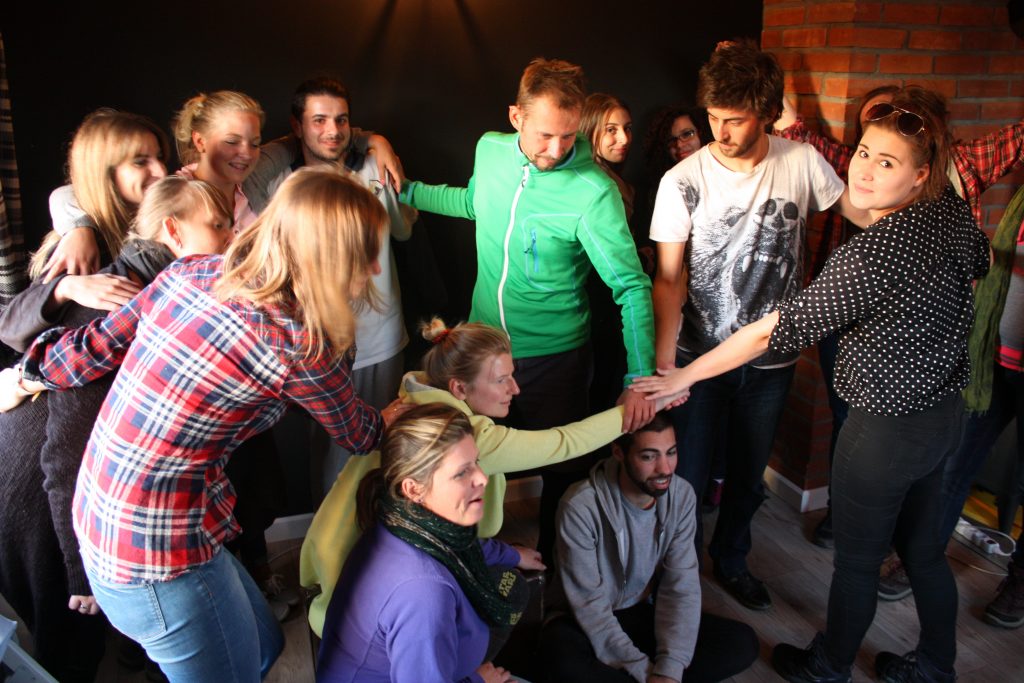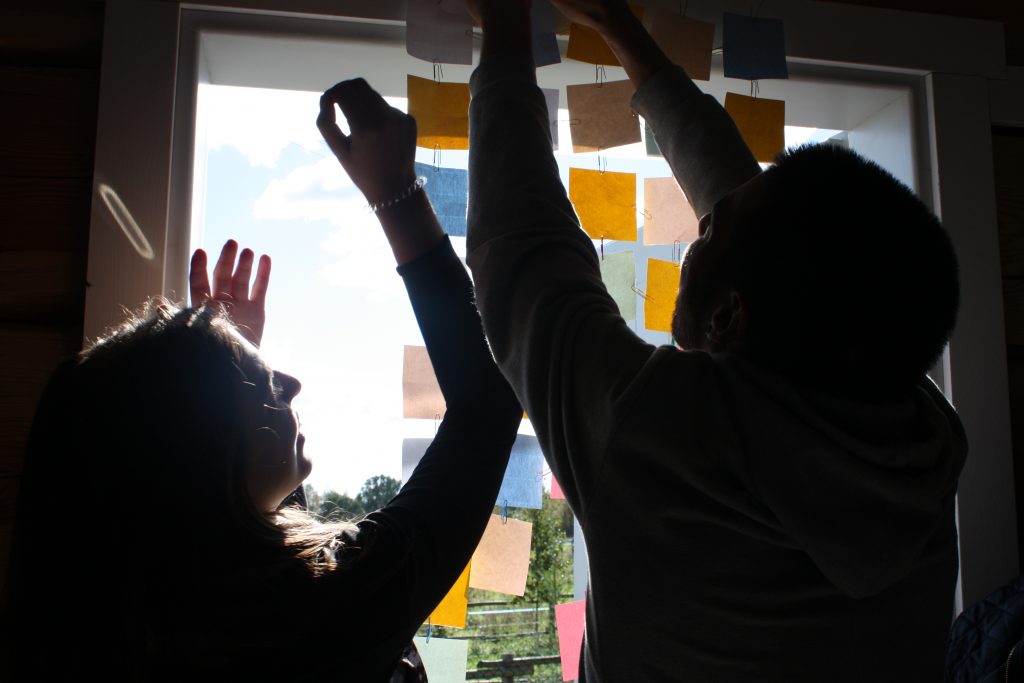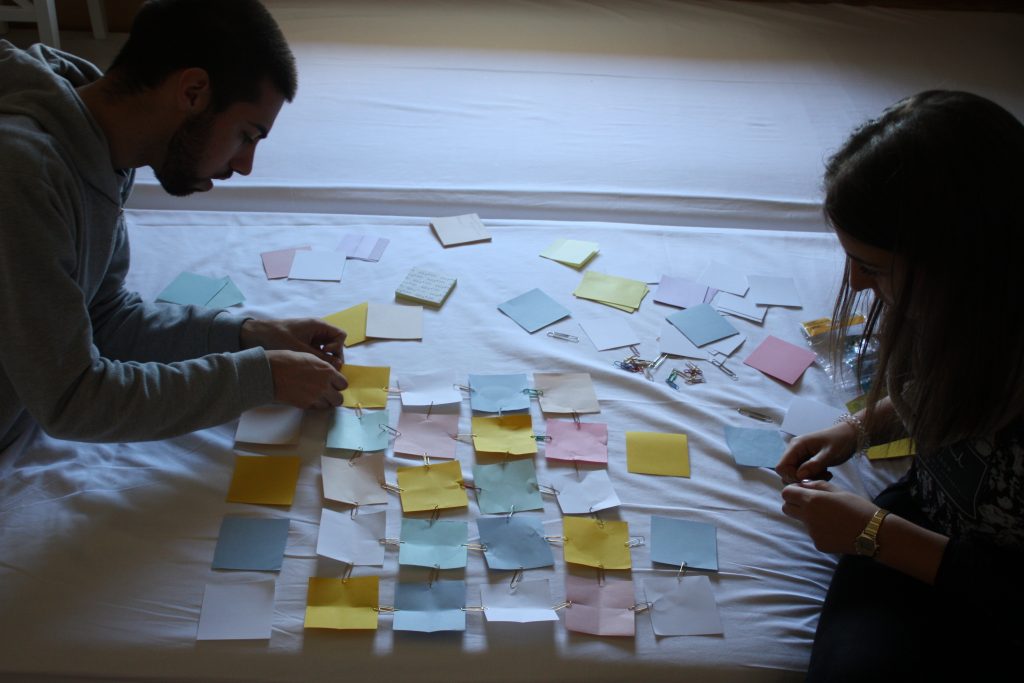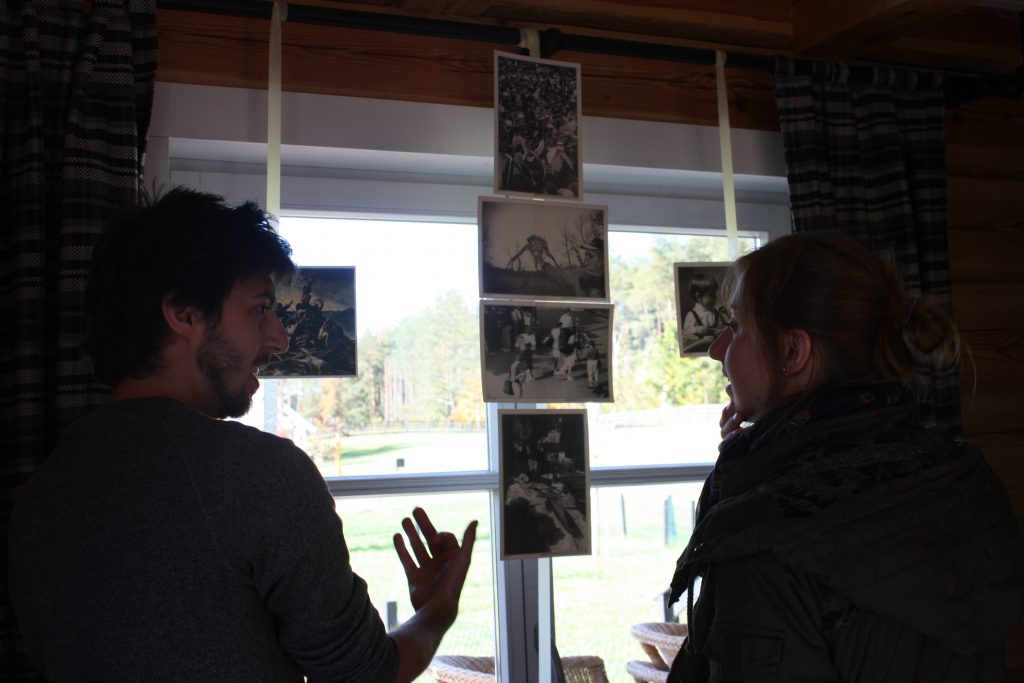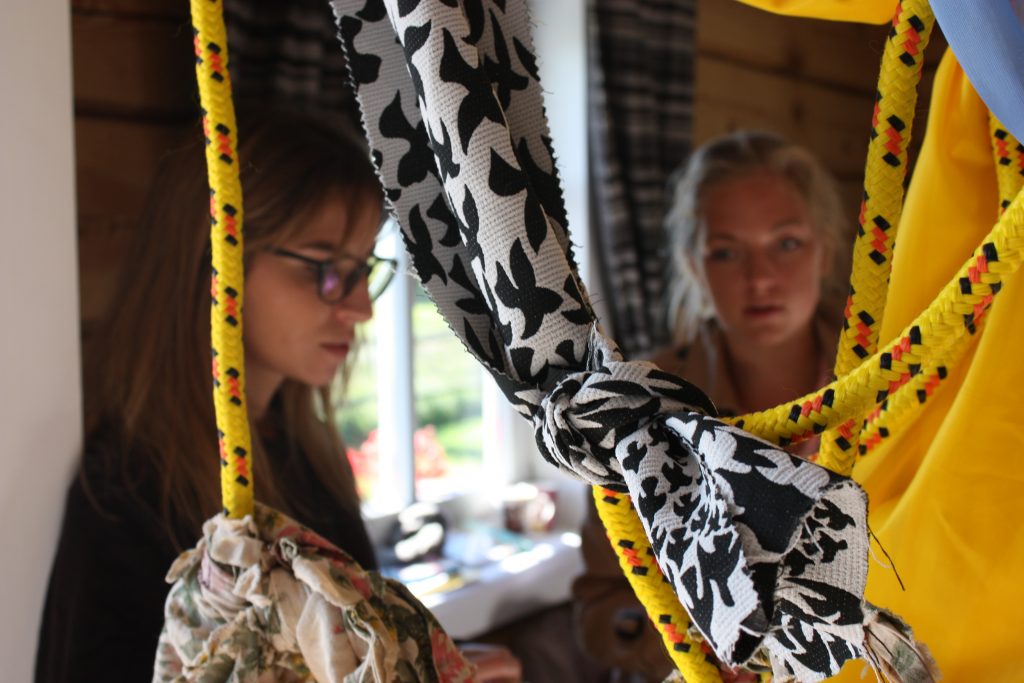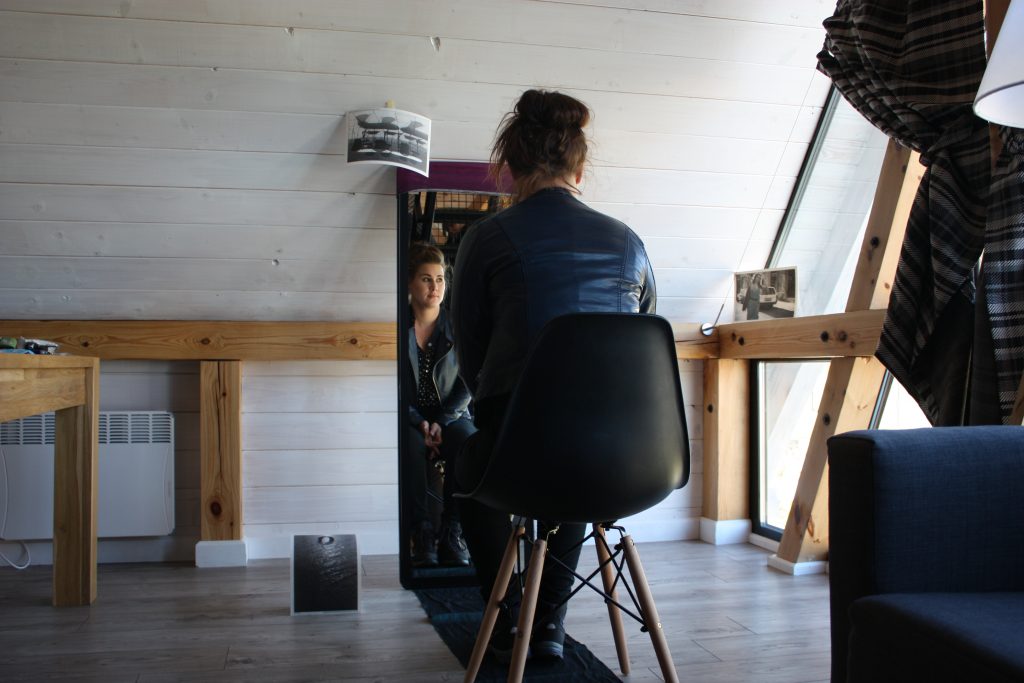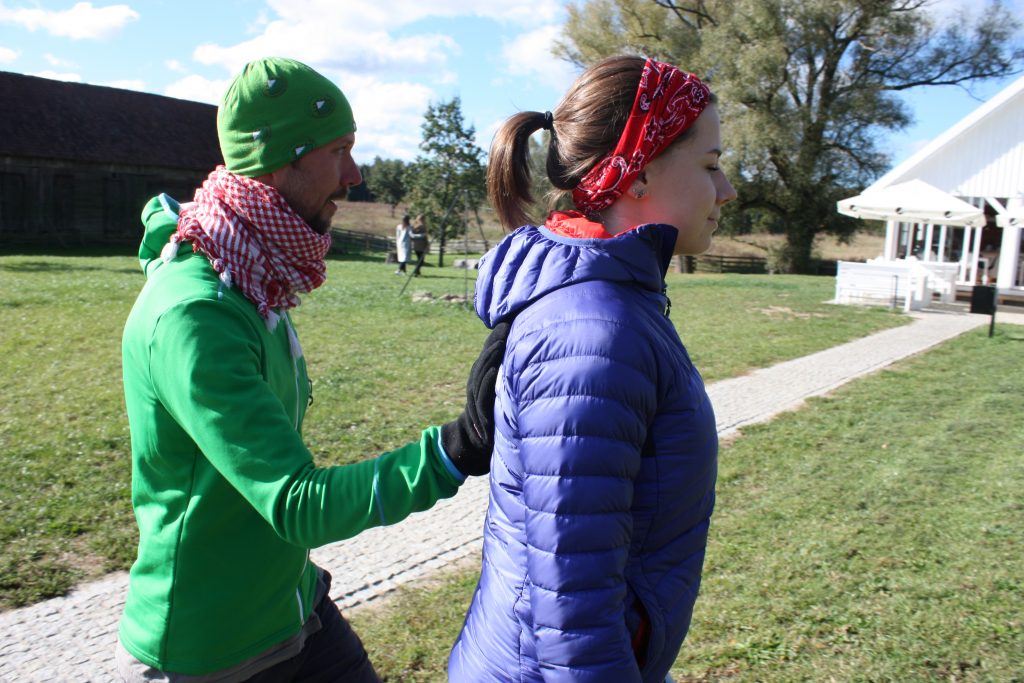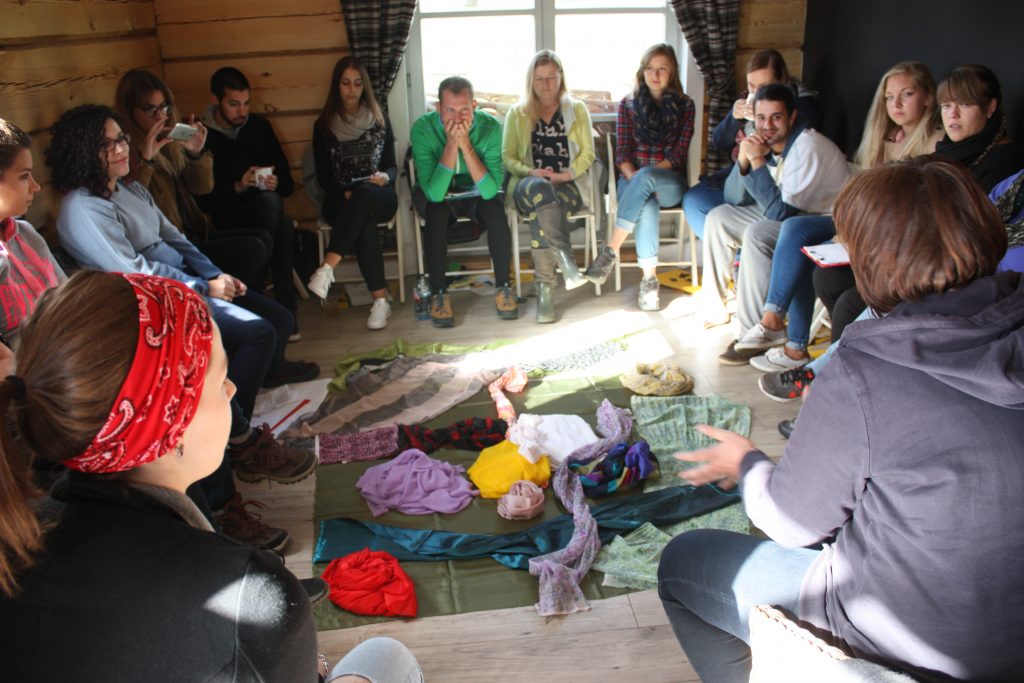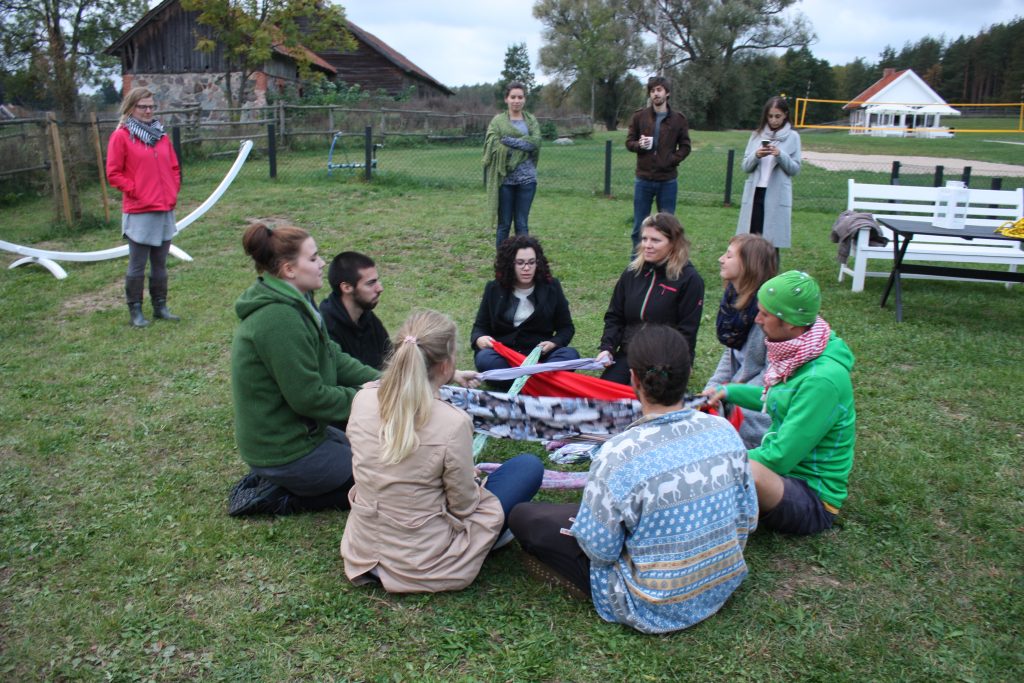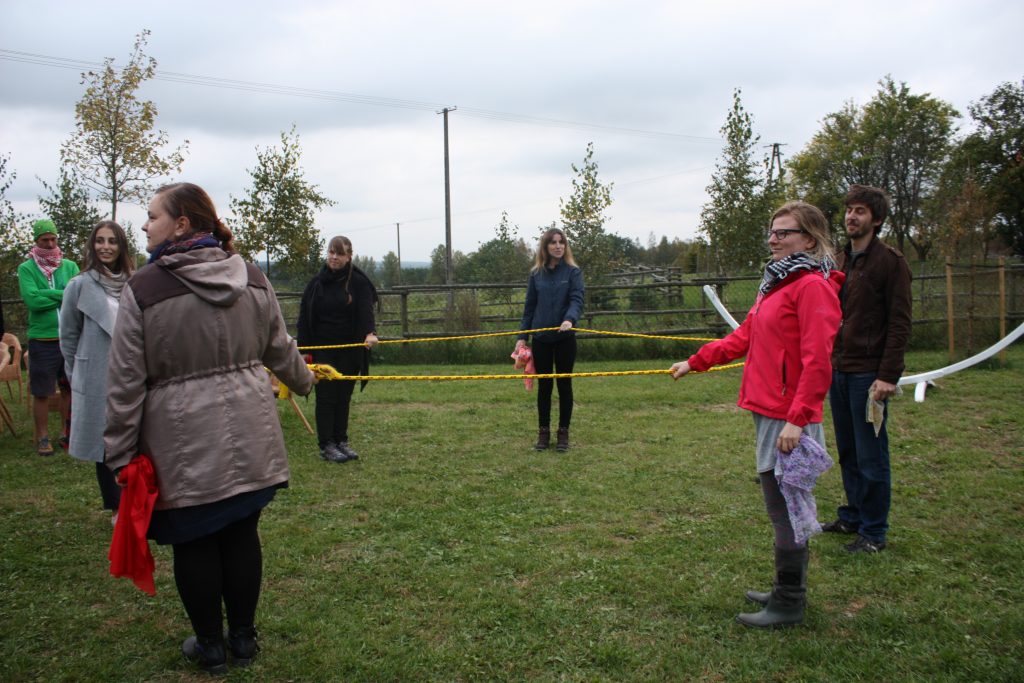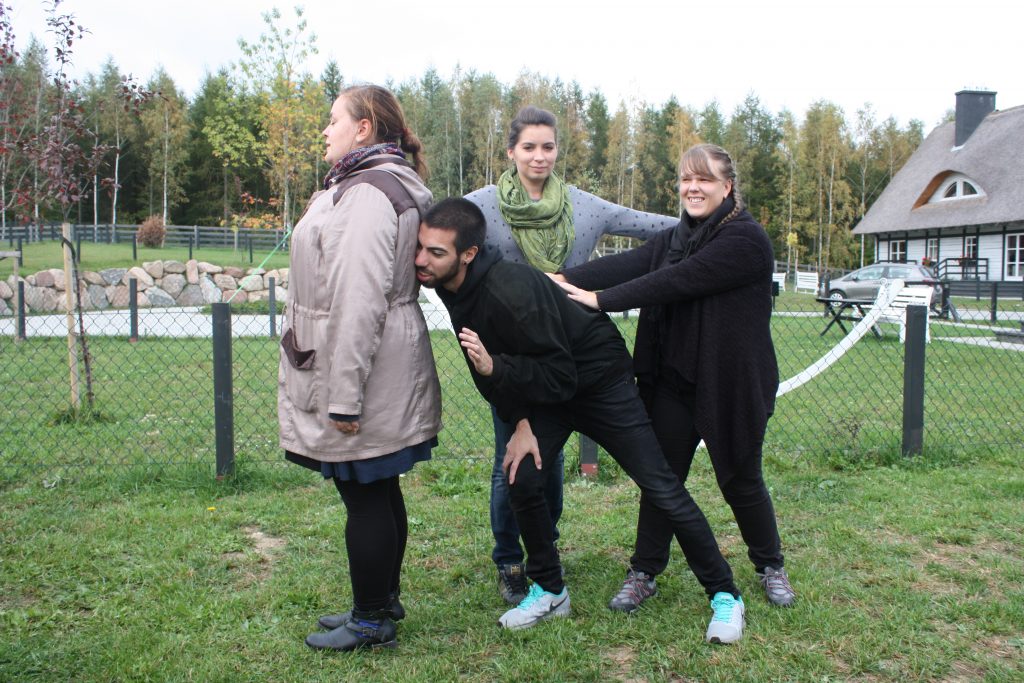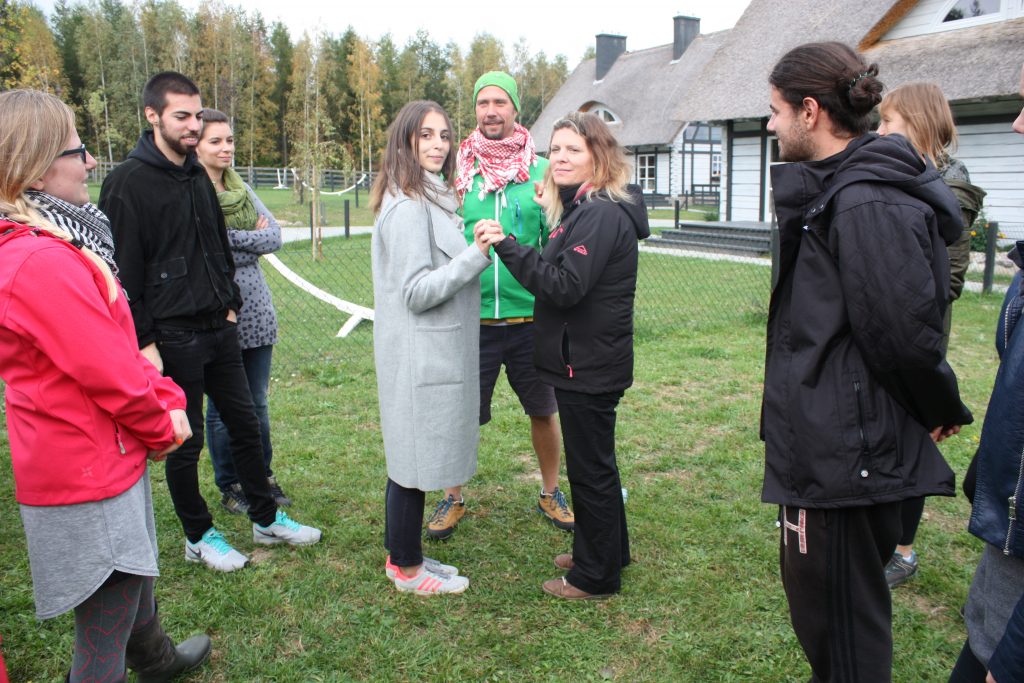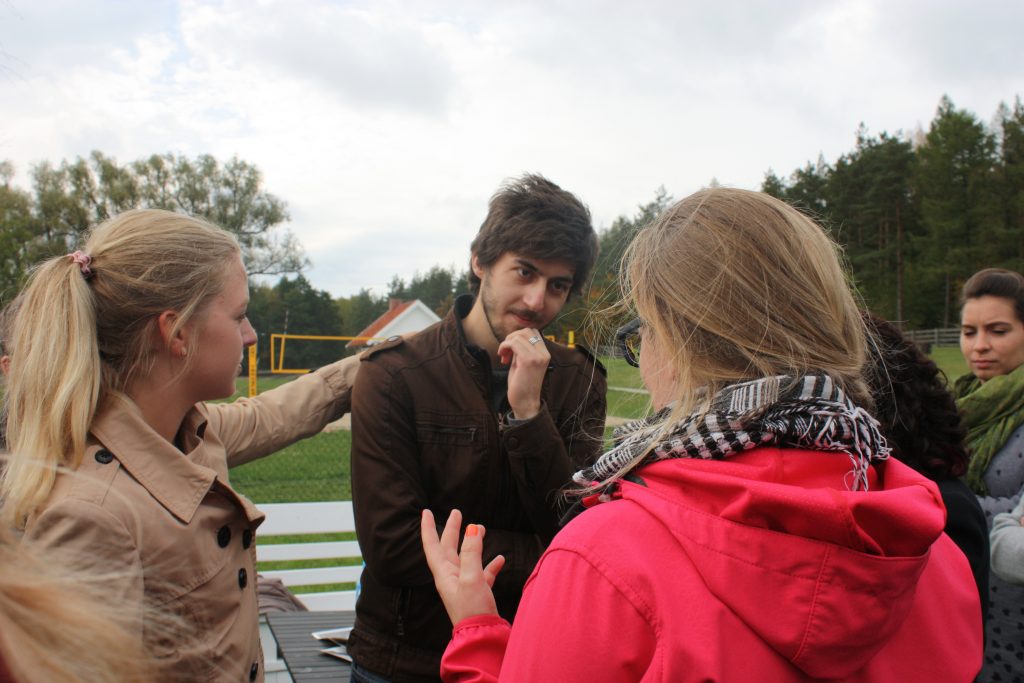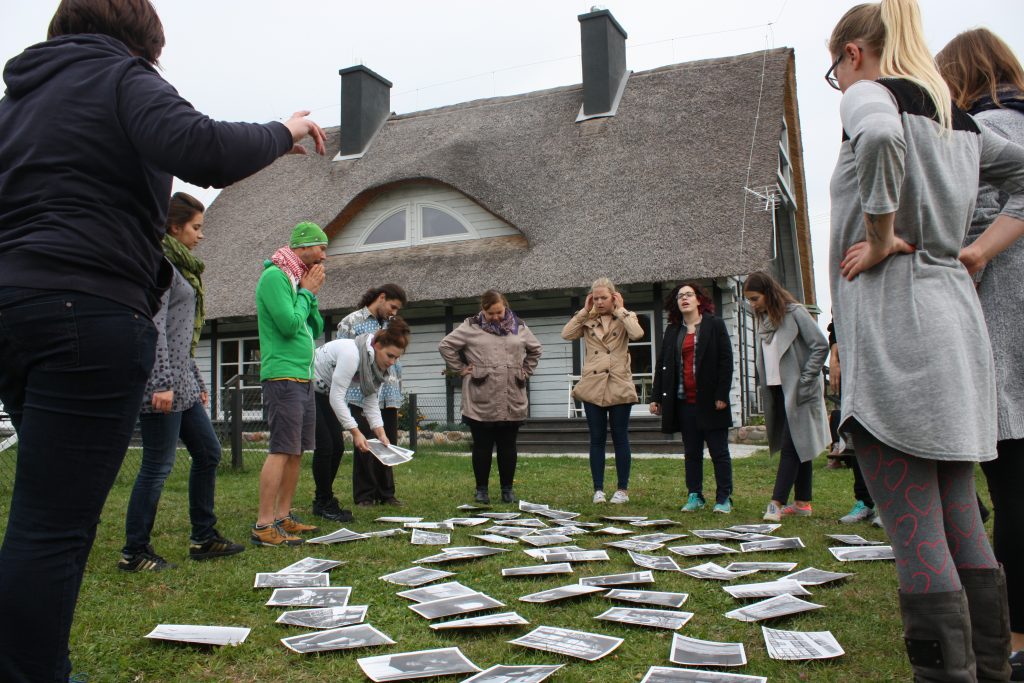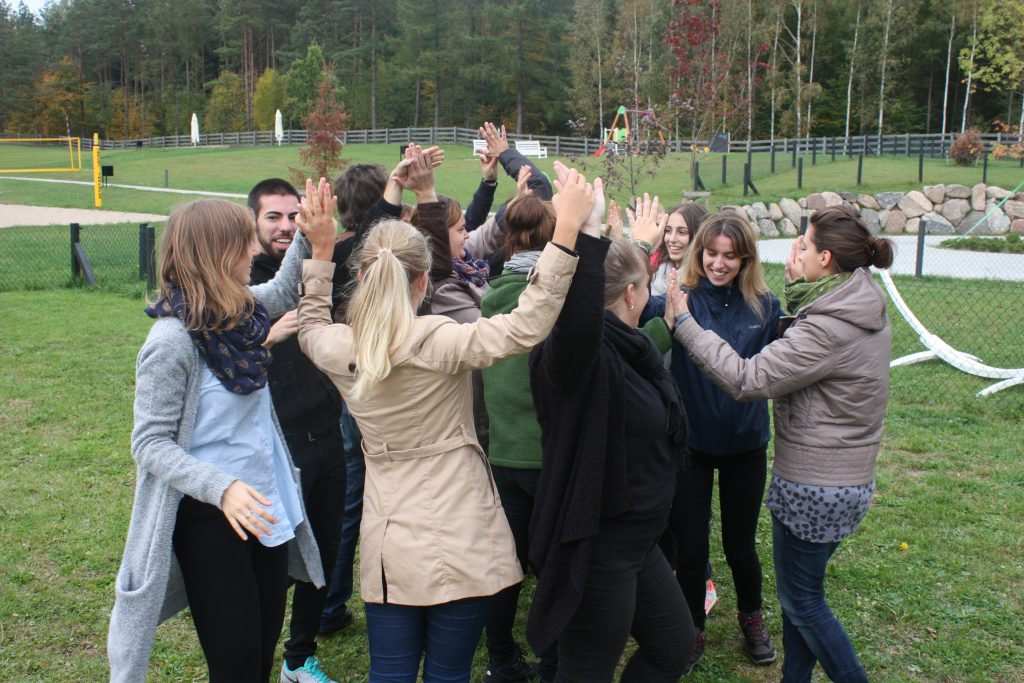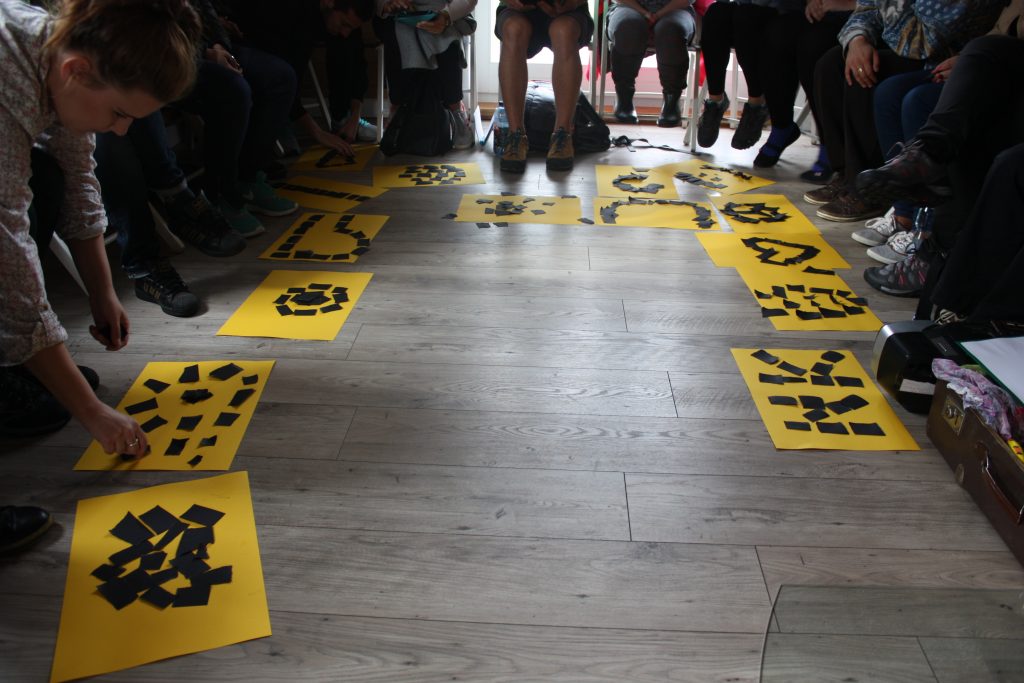Introduction
In the course of time drama is becoming more and more popular as a teaching method. That may be the reason why this name is sometimes confused with completely different methods and techniques which are not in any way connected with the proper drama. Since there are many attitudes towards drama and various classifications of it, an attitude shown in this description is named in many coverages as the “proper drama”, “educational drama” or “creative drama”. The rest of simple drama forms – as thespian musical exercises, other exercises or games as well as selected drama conventions (techniques) – were included in this description as forms of introducing to the proper drama, deepen and also exiting from it.
Therefore, ordinary theatre performance, in which youth is learning their parts by heart and then play it on the stage according to the script, will not be drama. In drama there is no division between actors and spectators. Previously prepared and learned text does not exist. The main emphasis is not on a way of playing the part, but on entering into the particular situation. Not playing a role, but entering into it is very important.
Foundations
It is a method of education which creates situations that engage participants on three levels:
- Physical (active movement of body, senses)
- Emotional (engagement of emotions)
- Intellectual (discussions, summaries, activation of participant’s knowledge)
Functions of drama:
- Development of skills: self-expression, self-confidentiality, self-esteem
- Development of imagination and sensitivity
- Gaining knowledge about ourselves, better understanding
- Possibility of looking at the society, better understanding of what is happening
- Development of communication, empathy and solving problem skills
- Gaining the knowledge and better understanding about the world
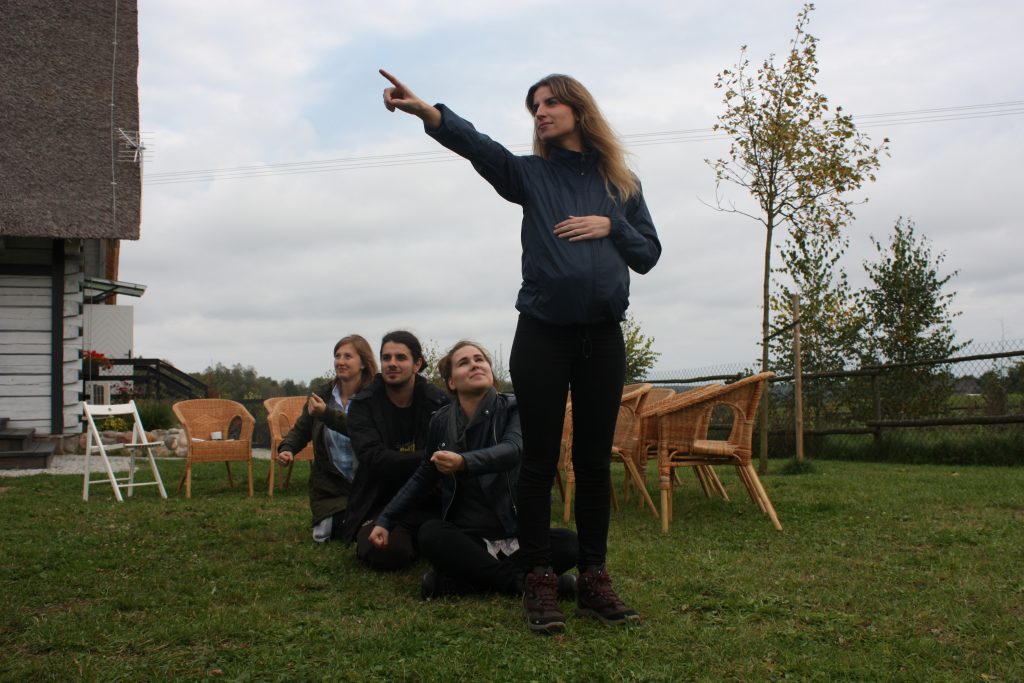
Drama is used as a teaching method in different subjects (not only humanistic) and on various levels of education. We can distinguish 6 main elements of drama:
- Topic – should be clearly stated and regarding no more than one aspect of a certain issue. During one drama session it is impossible to present and effectively analyse as well as discussing more than one aspects;
- Symbolism – in drama action as well as thinking in symbolic area is activated. Object that help to focus the attention are very helpful;
- Fiction – drama situation is fictional, which means it is made-up, created. The behaviour of the participants in this situation can be genuine. Drama gives the space for a conscious game “I do realise it is just a role but it is possible for me to one day be in such situation”;
- Role – the participants decide about the specific character of the role, while improvising and interpreting the matters as they arise. It has more in common with the social role rather than actor’s role in theatre. The development of role is occurring with the development of drama. If a certain role is played by more than one person, that personality could be interpreted differently by each participant
- Conflict – is the essence of creative drama, its driving force, positive value, realising the emotions – on different levels. Conflict can be distinct or subtle
- Tension – motivator (invitation) for the participants to engage in drama.
It can be built either by a sudden twist or gradually. The teacher, in order to attract and focus participants’ attention, introduces an atmosphere of uncertainty and surprise, tension building, for example, through the mystery, secret, race against time, a challenge or a difficult decision. Finally, the tension should be released through verbalization and analysis of emotions, as well as desymbolisation – so as not to leave the participant with his emotions, but to create the possibility of interpreting experience.
Depending on the purpose and structure of the course, the age of the participants, their interests, their level in drama, the environment from which they originate as well as their desires, the teacher selects the appropriate form and drama, gradually selecting the level of involvement of participants in a course of action (participation, as the main character of the event, experts, people indirectly related, observers). The course of the drama can be closed in the following pattern, bearing in mind that the work method of drama is often combined with other methods of work (eg. Discussion) and is used interchangeably with them.
The drama process:
at all levels of eduaction
Tips to work for people who teach drama. Restrictions regarding the use of drama.
check the following actions
The basic tasks for a person preparing the should be:
- setting the goals of drama
- determining the place of action
- determination of the initial situation, showing dramatic fiction,
- roles for the teacher and participants,
- preparation of the materials to start drama.
Like any other method, so the drama has its limits of application. Crossing them can lead to methodological errors, goals that weren’t achieved and entry to other areas the go beyond the drama (such as psychodrama or theatre). This may also involve the risk of emotional and psychophysical danger.
Factors that determine the limits:
- cognitive, emotional and motor skills of participants – drama must be for understandable and secure for them, it cannot come to physical injuries, as well as very strong reactions of fear or aggression.
- closing role – teachers must particularly ensure that the participants came out of the roles and are finished with them. The strategies need to be performed for closing the roles.
- the selection of the appropriate level of involvement of participants in the action – each situation and the topic can trigger a strong identification with the role and transfer the real problems of the participant to the fictitious ones. Analysis of the participants personal problems, as the drama problems, is no longer an educational drama and psychodrama. The boundary of the drama is to remain at the level of fictional characters and situations and behaviour of the distance to the problem.
- if the teacher decides to take the role of a fictional character, it is important to remain the leader at the same time, not to lose the perspective of the objectives of education and control over the drama process.
- the important issue is the possibility of leaving participants with decision-making in terms of going into certain roles and their further development. Teachers should be ready for that course of action and the development of the roles will not be proceeded in accordance with his/her objectives, if they had any.
In crisis situations (departing from the drama, for example. theatricality, making fun, aggression, psychodrama), the leader appears in a fictional reality and by an appropriate selection of drama techniques, directs further action, however, allowing that the participants make final decision on how the end the situation.
- Time schedule – drama should be planned for at least 1.5 hours. With the shortest block of time, special attention should be paid to good plan of all phases of the drama. If any of them is omitted, it can be detrimental to the goals of the course.



